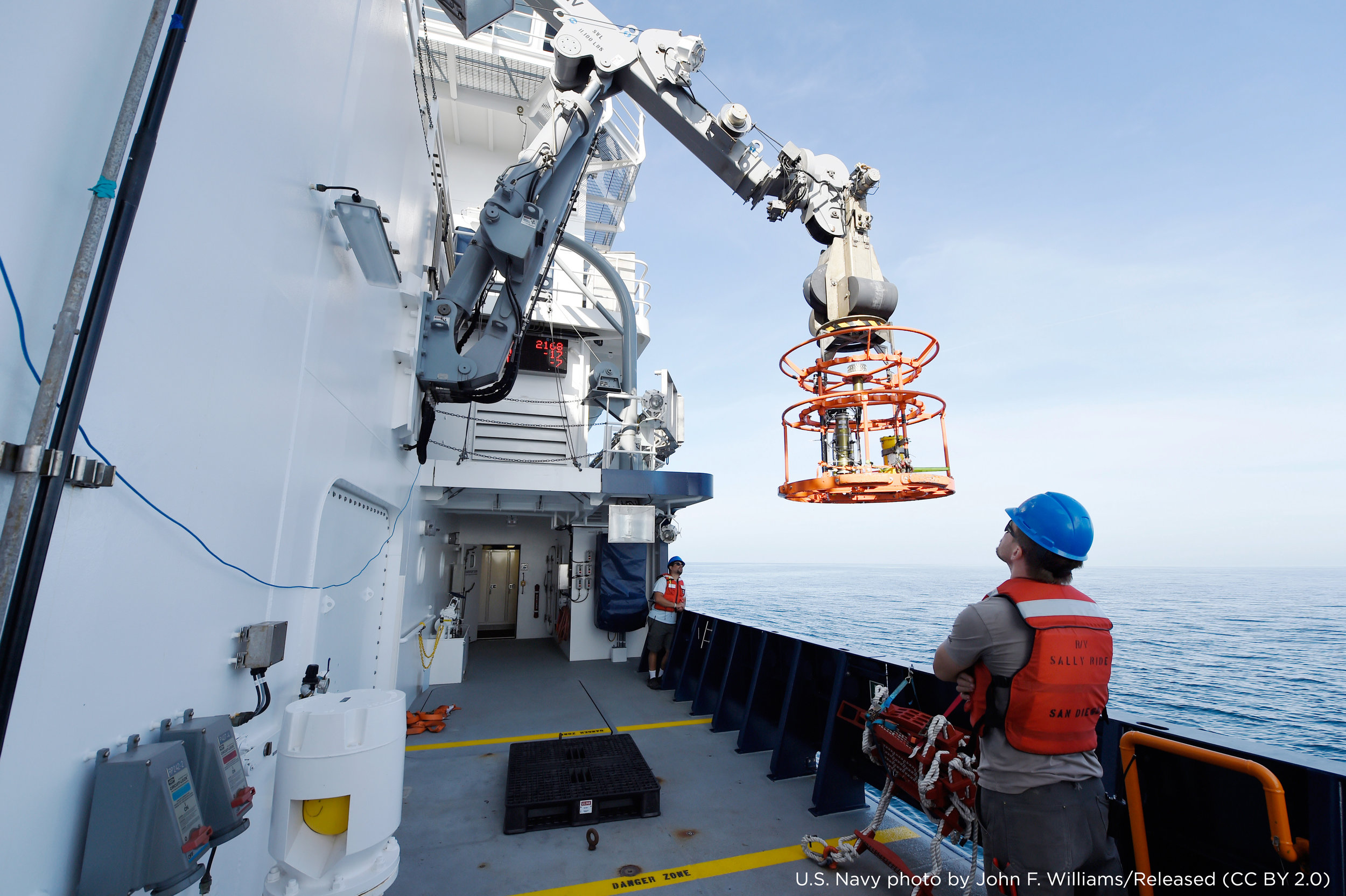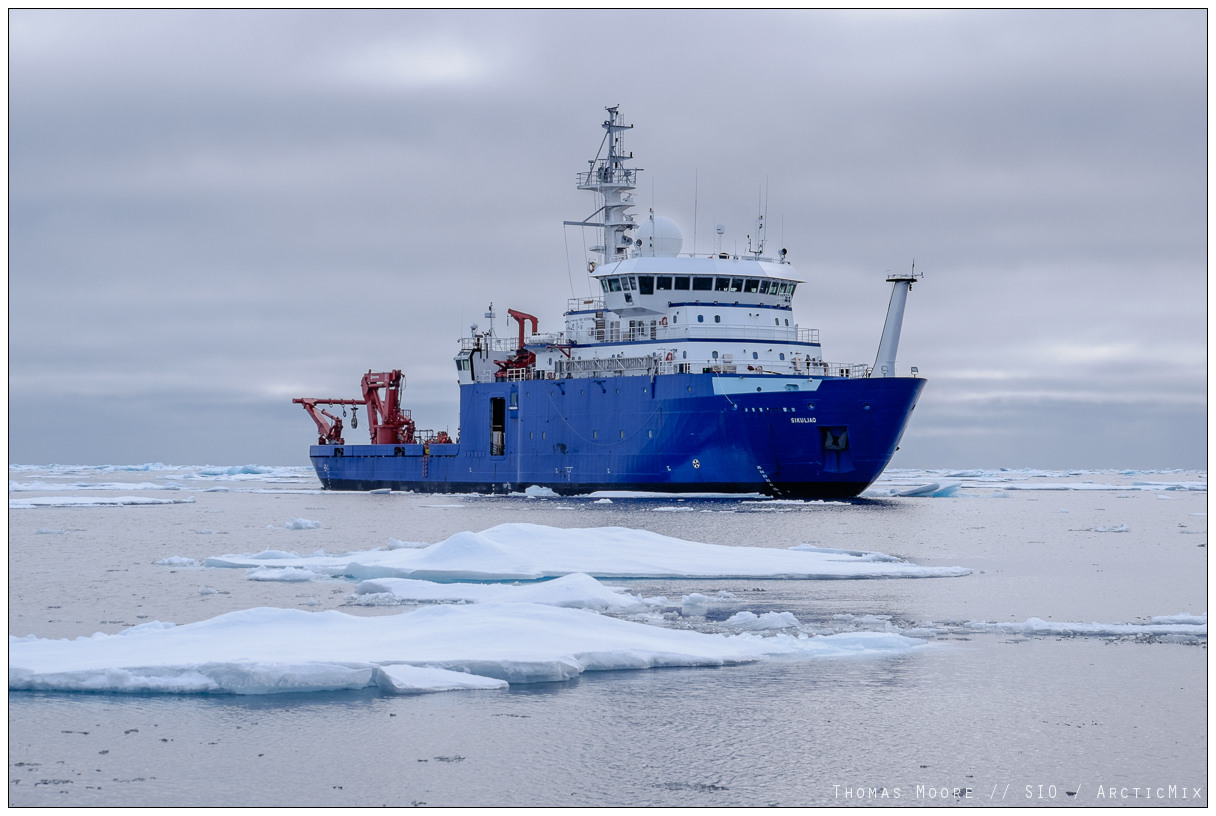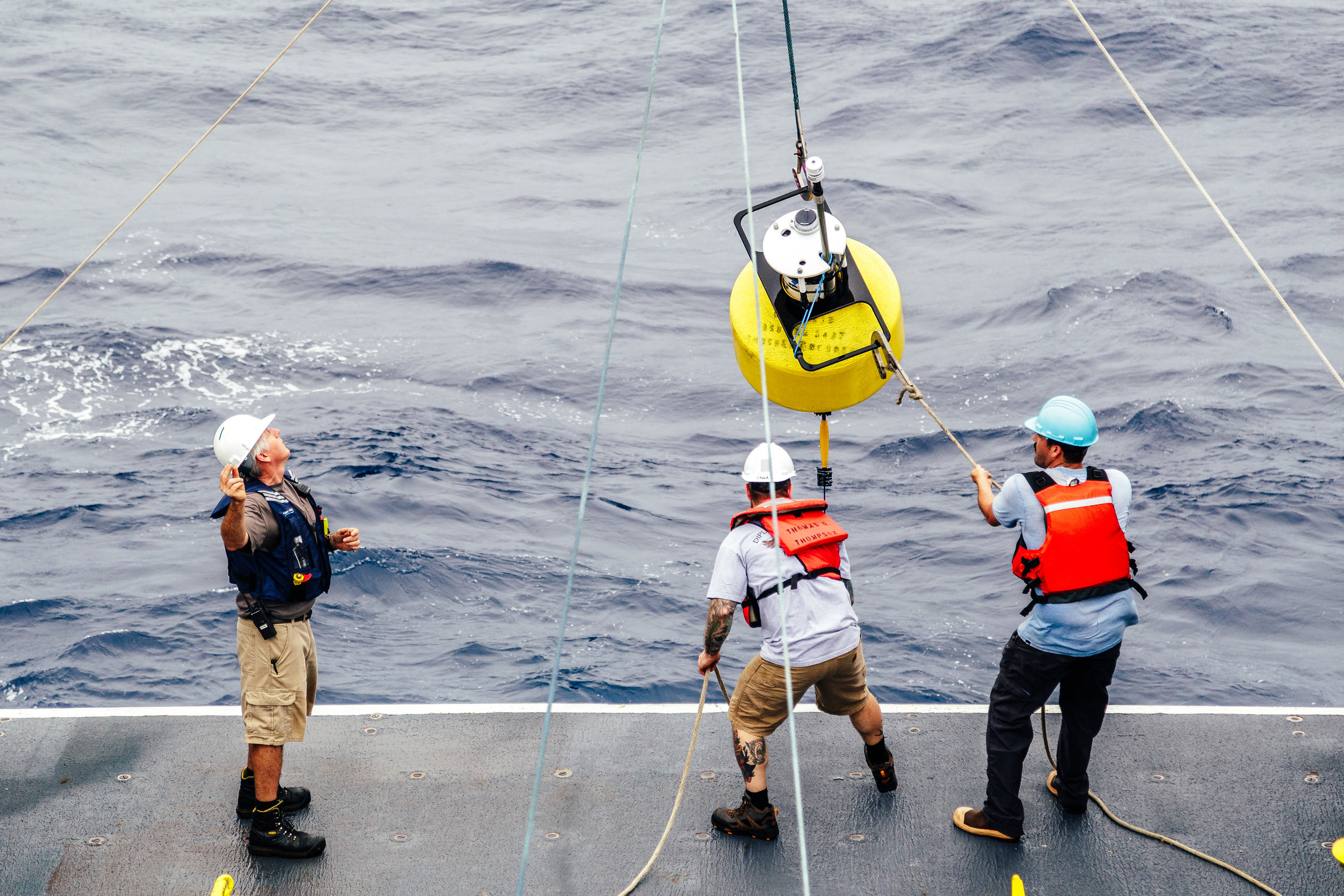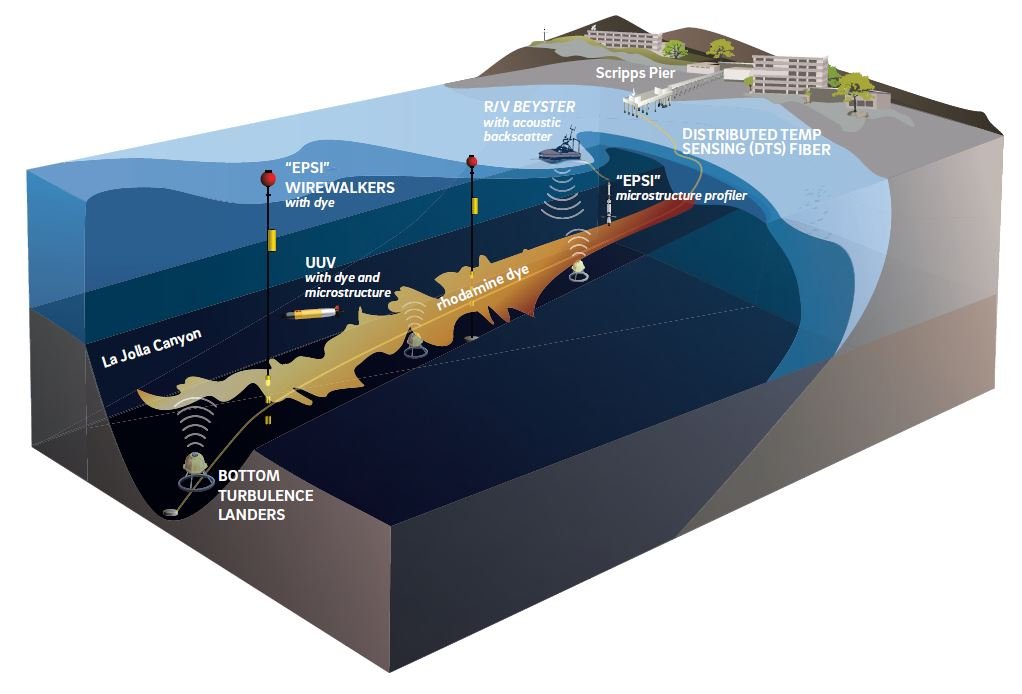MOD Projects
Our team works across the globe on projects that explore unknowns in ocean physics and biology
PLUMEX trials
PLUMEX investigates the dynamics of turbulent, negatively buoyant plumes, characteristic of a dewatering plume created by surface processing for deep-sea mining operations. Experiments will provide field validation for rigorous analytical and numerical models which will ultimately help set international legislation for deep-sea mining and provide a foundation on which to design associated Marine Protected Areas.
Arctic Mix
Led by Scripps Institution of Oceanography (SIO) scientists Jen MacKinnon and Matthew Alford, and University of Washington scientist John Mickett, ArcticMix embarked on a month-long expedition to the Arctic Ocean. The overall goal of this National Science Foundation (NSF) funded experiment is to understand the role ocean heat might be playing in the accelerating loss of Arctic sea ice.
T-TIDE & T-BEAM
The ultimate fate of low-mode internal tidal energy is unknown yet the specific geography of energy dissipation in the ocean has a large impact on the overall circulation, its biological functioning, and our climate. T-TIDE and the companion experiments T-Beam and T-Shelf together examine the dissipation of the internal tide as it shoals on the Tasmanian continental slope.
PISTON
Propagation of Intraseasonal Tropical Oscillations (PISTON) is a multidisciplinary, ONR-funded project that seeks to improve our understanding of ocean-atmosphere coupling in intraseasonal weather oscillations. MOD scientists contribute to PISTON with analyses that relate observed upper ocean transformations to past atmospheric processes and quantify their possible impacts on future weather.
LANGMUIR TURBULENCE
Langmuir circulation is a form of motion in the wind-mixed layer in the upper part of the ocean. When the wind blows, the water in this layer tends to "spiral" downwind, converging along the surface towards downwelling "streaks", from there the water, which is moving downwind faster than the rest of the surface water, sinks to the base of the mixed layer, then diverges away to the sides, and gradually upwells between the streaks to start the next cycle.
NISKINE
NISKINE in the North Atlantic experiment was a multi-cruise experiment during the summer of 2019 in the waters around Iceland. The cruise onboard R/V Armstrong was led by Luc Rainville from APL/University of Washington, and had a team of engineers and scientists from University of Washington, Stanford, University of Miami, and Scripps.
FLEAT
Flow Encountering Abrupt Topography (FLEAT) explores what happens to energy and momentum of the mean and meso-scale oceanic flow when it interacts with steep bathymetry.
Samoan Passage
The first stages of this project are aimed at measuring turbulent mixing and observing changes in the volume transport through Samoan Passage. Deep, abyssal flow of bottom waters of Antarctic and North Atlantic origin through the Samoan Passage - part of the Global Overturning Circulation (the so-called conveyor belt). A highlight is the strong mixing as the flow is funneled through the topographic constriction in this region.
MISO-BoB
MISO-BOB (Monsoon Intra-seasonal Oscillations in the Bay of Bengal) investigates how turbulent processes in the ocean play a fundamental role in setting surface properties such as sea-surface temperature (SST) and salinity (SSS), which can in turn affect difficult-to-model tropical atmospheric processes such as Monsoon Intra-seasonal Oscillations (MISOs).
GLOBAL INTERNAL TIDES
This is an NSF-funded collaborative project with Dr. Zhongxiang Zhao and Luc Rainville (APL/UW) and Dr. Harper Simmons (U. Alaska), aiming at constructing a global map of low-mode internal tide energy flux and dissipation by the application of state-of-the-art techniques and a combination of satellite altimetry, mooring data, and a numerical model output.
SODA
SODA is an ONR -funded project focused on the fate of heat in the upper Arctic Ocean. As the global ocean warms, the heat entering the Arctic both through the atmosphere and through inflows like Bering Strait also appears to be increasing. Whether that heat remains near the surface or is sequestered far below determines, in part, what role the ocean plays in mediating sea ice melt rates.
LAJIT - Experiment
La Jolla Internal Tide Experiment, lead by PhD candidate Madeleine Hamann, a student driven and multi–disciplinary experiment, this project examines the dynamics of the internal tide in the La Jolla Canyon System, its associated turbulence, and their combined influence on the biologically relevant processes on the adjacent shelf.
climate processes team
Our Climate Process Team (CPT) was created to develop, test, and implement dynamically appropriate parameterizations for diapycnal mixing due to internal-wave breaking for use in global climate models. CPT connects scientists trained in observational, theoretical and numerical techniques and members of two national climate modeling centers, GFDL and NCAR.
IWISE
The Internal Waves In Straits Experiment (IWISE) is a multi-year initiative funded by the Office of Naval Research. The goal of the experiment is to study the generation, propagation, and dissipation of internal tides in Luzon Strait. A pilot experiment took place in Summer 2010 to help focus the main experiment, which took place in summer 2011.
BLT
Boundary Layer Turbulence (BLT), is a component in the Global Overturning Circulation, a current system driven by dense water formation at high latitudes and turbulent mixing in the ocean interior and an important element of our climate system. The Rockall Trough in the Northeast Atlantic is a natural laboratory to study diapycnal upwelling along sloping boundaries.
La Jolla Canyon turbulence (LJCT)
This project seeks to simultaneously employ several new and old sensing modalities in concert in order to image turbulent structures, their evolution, and their fluxes along sloping boundaries. Because we aim to site the experiment in La Jolla Canyon, right in front of Scripps, the instrumentation can be fielded coherently, without travel, and using small boats and UUVs.
Tropical InstabilitY Waves
NSF-funded project to evaluate mixing mechanisms below tropical instability waves in the equatorial Pacific Ocean. Turbulent mixing near and underneath the Pacific cold tongue may play a role in driving and modifying ENSO dynamics.
NORSE - Northern Ocean Rapid Surface Evolution
ONR funded project investigating dynamical changes to the upper ocean at high latitudes under strong forcing from wind and waves. Autonomous vehicles, drifters, moorings and various profilers have been used in the first two cruises, including MOD’s in-house fast-CTD and WireWalker, as well as the brand new T-pads.


















